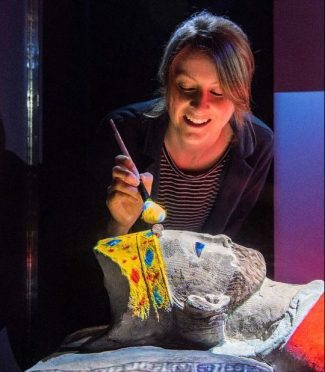A remnant of the country’s religious past will go on public display in Moray for the first time in decades this week.
The 700-year-old carving of Bishop Archibald will be part of a new exhibition at Elgin Cathedral on Friday.
The bishop helped to rebuild the cathedral after a fire tore through the building in 1270, and ultimately expanded the site.
He was entombed in the cathedral wall after his death in 1298, and the carving marked his resting place, close to the high altar.
Not only will the public be able to see the effigy for the first time in 20 years, but LED lighting will also breathe new life into the medieval relic.
The carving will be exhibited alongside more than 100 etched stones from the same period, with one piece dating as far back as the 13th century.
Hundreds of thousands of pounds have been invested in preparing the works for the presentation.
Fragments of cathedral window glass will also be exhibited.
Visitors will also be able to explore the collection through a touch-screen digital database.
The display is a joint venture between Historic Environment Scotland (HES), Moray Council, the Elgin Fund, and
Edinburgh Napier University.
Last night, Stephen Duncan, director of commercial and tourism for HES, said: “It’s great to see these stones coming home just in time for the start of the new visitor season in Scotland’s Year of Innovation, Architecture and Design.
“A great amount of effort has gone into the realisation of this exciting exhibition. From our conservation specialists who analysed tiny traces of paint from a 13th century sculpture of Bishop Archibald to our partners at Edinburgh Napier
University who used these findings to develop a lighting display, showing what it once might have looked like when freshly painted.
“This exhibition provides visitors with a fantastic opportunity to discover more about the cathedral, its architecture and history. As well as the chance to view the stones and their carvings up close, it also offers a rare glimpse into what Elgin Cathedral could have looked like some 700 years ago.”
For more information visit www.historic-scotland.gov.uk
